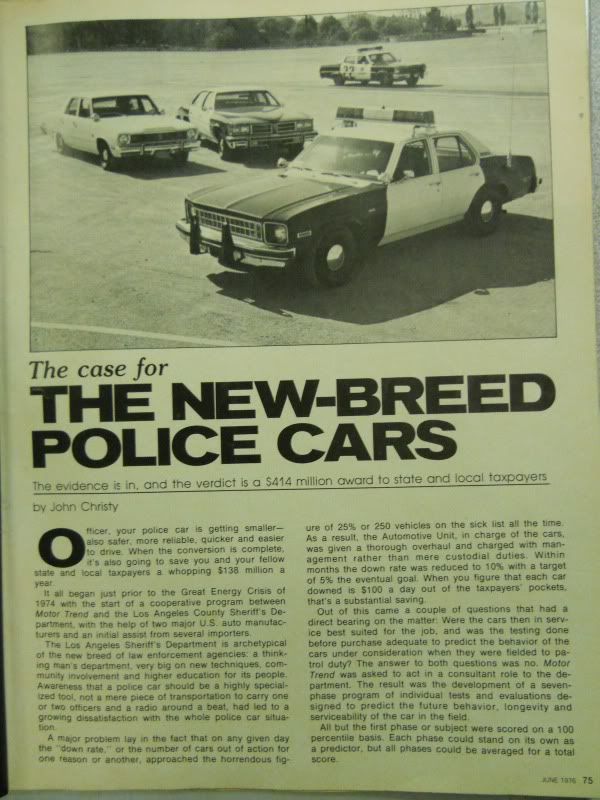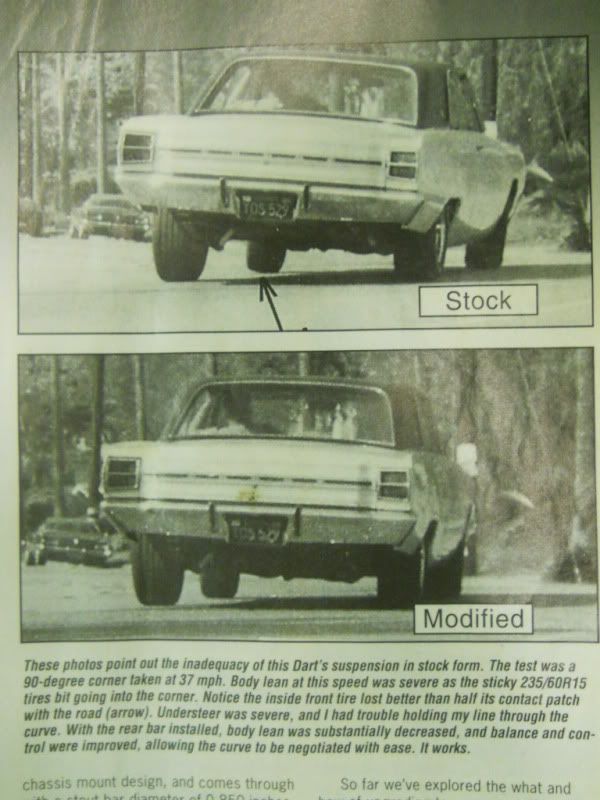The following are rules from my track, they are more like guide lines but need to stick close to them. There are no vacuum rules and cast iron intake only. Not too sure what p/g pump is please clarify? Chassis set up is all stock with leaf springs and shocks in the rear with shocks and torsion bars up front. Don't have sway bars but might put one in. If you need any more information let me know.
I have a real big issue when i am racing through a turn and hit the gas the right rear part of the bumper squats to the ground and grabs the track.
Cars must be strictly stock. Complete bumper to bumper steel unibody must be retained. No cutting, chopping, channeling or shortening allowed. The only inner body panels that may be removed are the roof and both doors to allow for roll cage installation. All other inner body panels must remain intact. All doors must be welded shut. The steel stock unaltered floor pan, fire walls, trunk (except where fuel cell is located). Front fender wells may be removed. Dashboards are required, but may be replaced by steel or aluminum. All front and rear firewall holes must be sealed off with steel sheet metal to fully enclose the driver’s compartment. Rear seat shelf must remain intact or replaced with stock appearing steel sheet metal. No aluminum allowed (except in dashboard replacement). No holes in the hood. Hood pins may be installed. Trimming of wheel wells allowed for tire clearance (2” maximum).
Suspension parts must remain absolutely stock for that make and model car. Except for front spring allowances noted in suspension rules below. No spacers, lumber, chains, etc. may be used to alter the stock suspension of that car (even if the factory installed it). Stock or stock replacement shocks only. No air shocks, load levelers or racing shocks allowed (even if the factory installed them). All rear springs must be stock and unaltered. Rear springs must be the same height/same length, same wire/bar size. No modifications to the rear springs are allowed. All front springs must match (left and right) exactly. Front springs must be the same height, wire size and spring rate. Height of the springs must be within one inch of the factory stock dimensions for that make and model car. Spring rates may be checked to be equal.
THE ENGINE MUST BE STRICTLY STOCK FOR THAT MAKE OF CAR and in it’s original mounts. No high-performance engines allowed. The only legal engine sizes from each manufacturer and the engine specifications are listed in these rules.
Engine sizes are interchangeable within manufacturer’s lines. Engine parts are not interchangeable between different size enginges.
Engine may be .040 over bore plus wear. Cast OEM replacement pistons only. No performance or lightweight pistons allowed. Only factory stock intakes and exhaust manifolds are allowed. No porting, polishing or grinding of any kind allowed. Repaired engine parts must be removed.
Factory balancing only. No grinding or balancing of pistons, rods or crankshaft allowed. Oil holes can be chamfered.
No high performance heads allowed. Stock valve jobs only. No angle valve jobs allowed. Oil shedders may be discarded. Steel or bronze valve guides may be used. Rocker arms studs may be pinned.
No grinding, altering or removal of any casting numbers, marks or part numbers on any part of the engine, heads or manifolds is allowed.
Ignition system must be OEM stock. Coil, modules, etc. must be stock or OEM replacement.
Carburetor must be stock or OEM replacement. Removal of choke butterflies is allowed. No other modifications to the carburetor are allowed. No adapters or spacers allowed. Double spring return is recommended. Fuel injection models may use track approved OEM carburetors and intake to replace fuel injection system. Fuel injected allowed but must be stock for make and model. No modifications allowed to the fuel injection system.
Stock timing chain only. No buttons or multiple key ways. Double roller is allowed.
Any hydraulic camshaft with a maximum lift .480. Stock or OEM replacement lifters only. No anti pump ups, solid, roller, mushroom cams or lifters allowed. No cross fire cams.
Optional engine equipment – valve covers, air cleaner, engine fan, oil pan and radiator only.




















